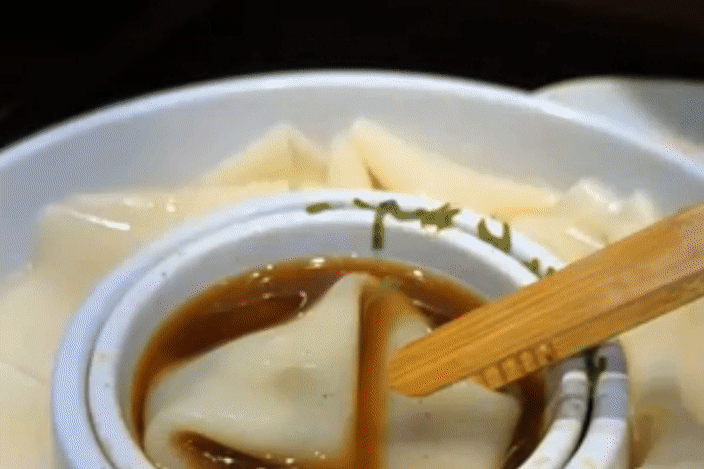when you want, where you want.
I Waited an Hour For Viral Noodles
 Video:
Video:
If you have been near Second Avenue and St. Marks Place around dinnertime on any non-Monday or during weekend lunch since Okiboru House of Udon opened, you’ve seen the line snaking south. Take one glance at the victorious diners behind the window and you’ll see what they’re waiting for: pale noodles as wide as the ribbon around a birthday present, being slurped down at every seat. This is Himokawa udon, a style developed in the breadbasket prefecture of Gunma, and it’s the main attraction at House of Udon, which is the second New York restaurant from the same group as dipping-ramen spot Okiboru House of Tsukemen.
I had heard of friends enduring wait times up to an hour, so when I decided to try the superwide udon with a friend, we came prepared with some sake to pregame in the Saturday-night queue. We got in line behind a couple dozen others as more people took their places behind us. We were finally seated after about 45 minutes, but I overheard the host telling some people after us that their chances of making it in before closing were slim.
The space inside is a narrow rectangle with 18 seats arranged around the perimeter; the only bathroom, behind the kitchen, is unavailable to customers. In lieu of an actual sink, each diner gets a capsule-size hand towel and a small bowl of water. An employee comes to take everything away, but the majority of the interaction at the restaurant is entirely QR code–based until a server places the tray containing your order in front of you.
My friend got a dippable version of the udon, plated in a halo around a bowl of citrusy soy and dashi stock, while I opted for the noodles in soup. We liked the broad yet delicate noodles, each one a chewy mouthful once you got through an unwieldy, slightly messy slurp. It’s basically the French kiss of noodles. (The sets come with a side of so-so tempura that includes a spear of asparagus, shrimp, and a tempura-fried strip of bacon that I found exhaustingly greasy.)
Himokawa udon might be my new favorite noodle, but I can’t see myself going back to Okiboru for a second round. This is because there’s an alternative way to procure this regional specialty: Greenpoint’s Dashi Okume sells the same type of udon in dried form, a rarity I haven’t seen at any other Japanese market. It costs $13 for a pack with two servings of noodles. To complete the dish, you will also need a bottle of dashi concentrate and a packet of togarashi, components you can also get elsewhere for less, but these will last over many uses. It’s not inexpensive, by grocery standards, but it’s still less than dinner for two at a restaurant with no bathroom.
According to the package instructions via Google Translate, the noodles should be dropped in boiling water one at a time — so that they don’t stick — and then simmered gently for ten minutes before being rinsed in cold water to preserve the bounce, which is exactly what I did. They softened and folded in the water instantly, almost as if they were fresh.
I served the noodles in a broth made of one part bottled stock and eight parts boiling water with a healthy shake of the really good togarashi. I thought it would be a distant second to the restaurant’s version — but I barely noticed a difference. Maybe these noodles were a millimeter thicker but still chewy and indicative of intense kneading. At my own dinner table, unbothered, I was able to appreciate the textural eccentricities of the flat, wide udon. There is an extra joy when eating an unabashedly impractical food while nobody is looking at you.
More Eating New York
All Rights Reserved. Copyright , Central Coast Communications, Inc.